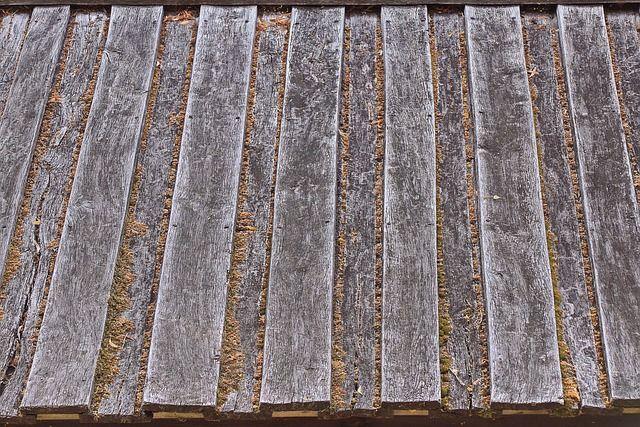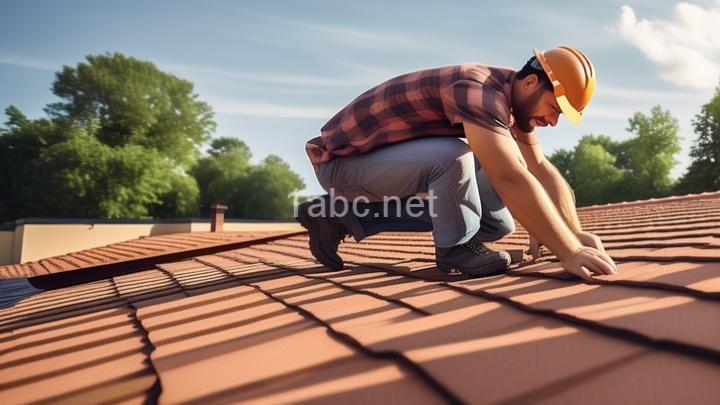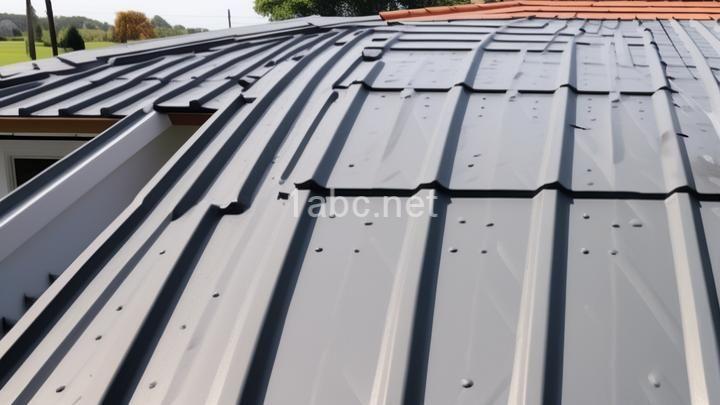The Top Green Roofing Materials to Consider for Your Next Roofing Project
Introduction:
I. Benefits of Green Roofing:
1. Environmental Benefits:
2. Economic Benefits:
II. Factors to Consider When Choosing Green Roofing Materials:
1. Climate:
2. Durability:
3. Maintenance Requirements:
4. Cost:
III. Top Green Roofing Materials:
IV. Case Studies:
1. Green Roof with Recycled Shingles:
2. Metal Roof with Solar Panels:
Conclusion:

Introduction:
Green roofs are an innovative and eco-friendly option for your next roofing project. Not only do they enhance the aesthetic appeal of your property, but they also offer numerous environmental and economic benefits. In this article, we will explore the top green roofing materials available in the market, providing you with all the information you need to make an informed decision. So, let's get started on this green adventure!
I. Benefits of Green Roofing:
Before we dive into the different green roofing materials, let's take a moment to understand the advantages of choosing this sustainable option for your roof. Green roofs have gained popularity in recent years, and for good reason. Here are some of the benefits they offer:
1. Environmental Benefits:
Green roofs play a vital role in mitigating the impact of urbanization on the environment. They help to:
-
Improve Energy Efficiency: Green roofs act as natural insulators, reducing the need for excessive heating or cooling. This leads to lower energy consumption and reduced greenhouse gas emissions.
-
Reduce Stormwater Runoff: By absorbing rainwater, green roofs prevent excess water from overwhelming storm drains and contribute to the reduction of urban flooding.
-
Enhance Biodiversity: By providing a habitat for plants, insects, and birds, green roofs promote biodiversity in urban areas, creating a more sustainable and harmonious ecosystem.
2. Economic Benefits:
In addition to their positive impact on the environment, green roofs can also offer economic advantages:
-
Increased Property Value: Green roofs are a unique feature that adds value to your property. Potential buyers are often willing to pay a premium for homes with green roofs due to their energy-saving and environmental benefits.
-
Long-Term Cost Savings: Green roofs provide insulation, reducing the need for excessive heating or cooling. This can lead to significant energy cost savings over time.
II. Factors to Consider When Choosing Green Roofing Materials:
When it comes to selecting the right green roofing materials for your project, several factors need to be taken into consideration. These factors include:
1. Climate:
Different regions have varying climatic conditions, which can impact the performance and durability of green roofing materials. It is essential to choose materials that are suitable for your specific climate to ensure long-lasting and effective results.
2. Durability:
Roofing materials should be able to withstand the elements, including extreme weather conditions, UV radiation, and temperature fluctuations. Opting for durable materials will ensure the longevity of your green roof.
3. Maintenance Requirements:
Consider the maintenance needs of the materials you choose. Some options may require more regular upkeep, such as pruning or irrigation, while others may be relatively low maintenance.
4. Cost:
Budget is always a factor to consider when embarking on any construction project. Green roofing materials vary in price, so it's important to find a balance between cost and quality.
III. Top Green Roofing Materials:
A. Option #1: Recycled Shingles:
Recycled shingles are an excellent choice for environmentally conscious homeowners. These shingles are typically made from recycled materials such as plastic or rubber. Here are some reasons why recycled shingles are worth considering:
-
Durability: Recycled shingles are designed to withstand harsh weather conditions, making them a long-lasting roofing option.
-
Resistance to Weather Elements: These shingles are highly resistant to wind, hail, and UV radiation, ensuring the protection of your home for years to come.
B. Option #2: Metal Roofs:
Metal roofs have gained popularity in the green roofing industry due to their sustainability and durability. Here's why they are worth considering:
-
Long Lifespan: Metal roofs have an impressive lifespan of 50 years or more, making them a long-term investment.
-
Recyclability: At the end of their lifespan, metal roofs can be recycled, reducing waste and minimizing the environmental impact.
-
Energy-saving Properties: Metal roofs reflect sunlight, reducing the amount of heat absorbed by your home. This helps to lower cooling costs during hot summer months.
C. Option #3: Living Roofs:
Living roofs, also known as green roofs, involve planting vegetation directly on the roof surface. Here's why you should consider this eco-friendly option:
-
Improved Air Quality: Living roofs act as natural air filters, trapping pollutants and releasing oxygen. This leads to improved air quality in urban environments.
-
Biodiversity: By creating a habitat for plants, insects, and birds, living roofs contribute to the preservation of biodiversity in densely populated areas.
D. Option #4: Solar Panels:
Solar panels can be integrated into a green roof system, providing a sustainable source of energy for your home. Here's why solar panels are a great addition to your green roof:
-
Renewable Energy: Solar panels harness the power of the sun, providing a clean and renewable source of energy for your home.
-
Reduced Carbon Footprint: By utilizing solar energy, you can significantly reduce your reliance on fossil fuels, contributing to a greener and more sustainable future.
IV. Case Studies:
To provide you with real-life examples of successful green roofing projects, let's take a look at some case studies:
1. Green Roof with Recycled Shingles:
Mr. Johnson, a homeowner in a coastal area, opted for a green roof with recycled shingles. The recycled shingles proved to be highly durable, withstanding strong winds and saltwater exposure. Mr. Johnson reported a noticeable reduction in his energy bills, thanks to the insulation provided by the shingles.
2. Metal Roof with Solar Panels:
The Smith family installed a metal roof with integrated solar panels on their suburban home. They were amazed at the energy savings they experienced, with their electricity bills dropping significantly. The recyclability of the metal roof was also a key selling point for them, as they wanted to minimize waste.
Conclusion:
Choosing a green roof for your next roofing project is a decision that not only benefits the environment but also offers long-term advantages for your home. By considering factors such as climate, durability, maintenance requirements, and cost, you can select the right green roofing materials for your specific needs. Whether you opt for recycled shingles, metal roofs, living roofs, or solar panels, you are taking a step towards a more sustainable future. So, let's embrace green roofing and make a positive impact on our planet, one roof at a time!
FREQUENTLY ASKED QUESTIONS
What are green roofing materials?
Green roofing materials are eco-friendly options used to cover rooftops. These materials are designed to reduce energy consumption, improve air quality, and promote environmental sustainability. They often incorporate features like solar panels, rainwater collection systems, and vegetation to enhance their eco-friendly properties. Green roofing materials can include options such as recycled metal, clay or concrete tiles, rubber shingles, and even living roofs with plants and vegetation. These materials not only provide insulation and reduce heat transfer, but they also help mitigate stormwater runoff and create a natural habitat for birds and insects. By choosing green roofing materials, you can contribute to a greener and more sustainable future.
Why should I consider using green roofing materials?
There are several reasons why you should consider using green roofing materials. Firstly, green roofing materials are more environmentally friendly compared to traditional roofing materials. They are often made from recycled or renewable materials, reducing the demand for new resources and minimizing waste.Secondly, green roofing materials can help improve energy efficiency in your home or building. They provide better insulation, reducing the need for heating and cooling, which in turn can lower your energy bills. Additionally, green roofs can act as natural insulators, keeping the interior of your building cooler in the summer and warmer in the winter.
Furthermore, green roofing materials can contribute to improved air quality. They can help filter pollutants and capture airborne particles, reducing the amount of harmful substances in the air. This can be especially beneficial in urban areas where air pollution is a concern.
Another advantage of green roofing materials is their ability to absorb and retain rainwater. This helps to reduce stormwater runoff, which can contribute to flooding and water pollution. By absorbing and slowly releasing rainwater, green roofs can help alleviate the strain on drainage systems and promote better water management.
Lastly, green roofing materials can enhance the aesthetic appeal of your property. They can provide a natural and visually appealing landscape, creating a more pleasant and inviting environment.
Overall, using green roofing materials can benefit both the environment and your own well-being. They offer energy efficiency, improved air quality, water management, and aesthetic appeal. So, considering these advantages, it's worth exploring the option of using green roofing materials for your next roofing project.
What are some popular green roofing materials?
There are several popular green roofing materials that are commonly used in sustainable building practices. Some of these materials include:
-
Green roof systems: These are specialized roofing systems that incorporate a layer of vegetation, such as grass, plants, or even small trees. They provide insulation, reduce stormwater runoff, and improve air quality.
-
Recycled shingles: These are shingles made from recycled materials, such as rubber or plastic. They are durable, energy-efficient, and help reduce waste.
-
Metal roofs: Metal roofs are a popular choice for green building due to their durability, recyclability, and energy efficiency. They can be made from recycled materials and can be easily recycled at the end of their lifespan.
-
Clay or concrete tiles: Clay and concrete tiles are natural, long-lasting, and energy-efficient options for green roofing. They provide excellent insulation and can be made from sustainable materials.
-
Solar panels: While not a roofing material in itself, solar panels can be integrated into the roofing system to generate clean and renewable energy. They help reduce reliance on fossil fuels and lower energy costs.
It's important to note that the choice of green roofing materials depends on various factors such as climate, building design, and budget. Consulting with a professional roofer or green building expert can help determine the best green roofing material for your specific needs.
Are green roofing materials more expensive than traditional materials?
Green roofing materials can be more expensive than traditional materials upfront, but they often offer long-term cost savings. While the initial investment may be higher, green roofing materials tend to be more durable and energy-efficient, which can lead to reduced maintenance and utility costs over time. Additionally, green roofs can provide insulation, improve air quality, and help manage stormwater runoff, which can further contribute to savings in the long run. It's important to weigh the upfront costs against the potential long-term benefits when considering green roofing materials.


